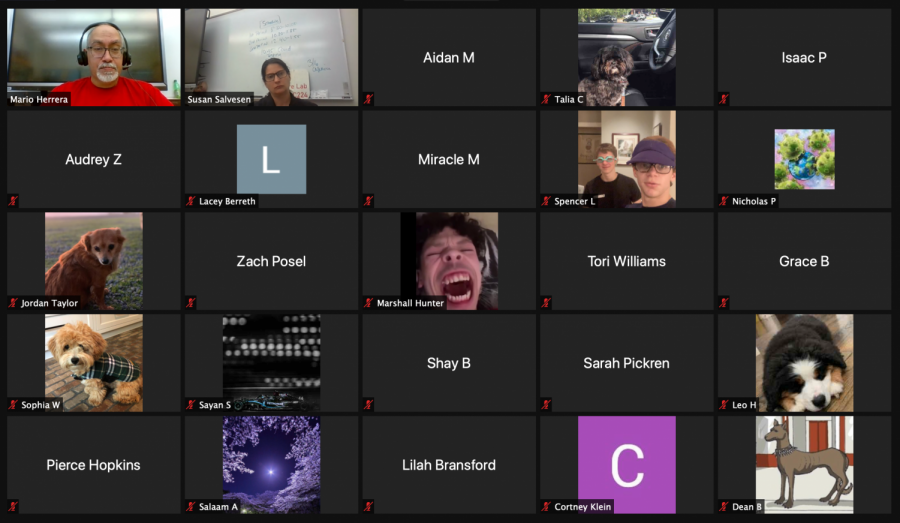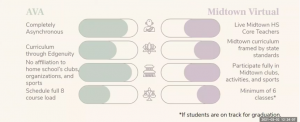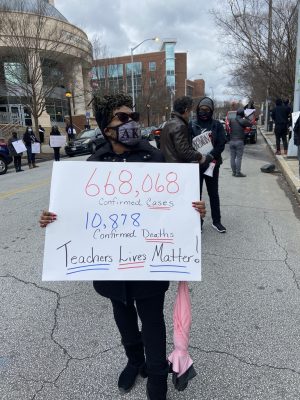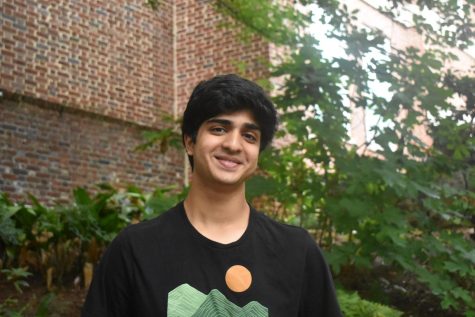Midtown virtual institute harms outweigh benefits
Students in AP Seminar participate in class with their cameras turned off. Many students have no face-to-face interactions in virtual classrooms.
April 5, 2021
Grady High School’s administration recently announced its plan to explore virtual school for the 2021-2022 school year. However, remote learning has significant drawbacks which could be harmful to students.
Currently, administrators are only in the planning phase, gathering input from the community to assess demand and address the needs of parents and students. The administration said this information will be used to create more comprehensive options and, if the feedback is positive, develop and implement Midtown Virtual Institute.
Many students who prefer distance learning like the increased flexibility of online schooling. However, this sacrifices the stability in-person education provides by regulating distractions and other external factors. The in-person model also increases accountability because students can’t leave class without teachers noticing.
Although some students claim online schooling has been better for their mental health, the virtual model has adverse effects for many students. According to a February survey, by NBC News and Challenge Success, an organization dedicated to student well-being, 56 percent of high school students reported higher levels of stress in virtual school and those who said mental health was a stressor increased from 26 percent to 32 percent. Additionally, data found online education caused students to get less sleep. 41% of students reported they were less engaged in school, and many said connections with their teachers and peers had worsened.
In addition to impacts on general well-being, distance learning also affects academic performance. A 2019 study from the National Education Policy Center at the University of Colorado Boulder shows that, before the pandemic, students who were enrolled in virtual schools were far less likely to graduate high school than students who attended school in person. Data collected during the 2017-2018 school year showed that on average, students fully enrolled in virtual and blended schools had graduation rates of 50.1 percent and 61.5 percent while nationally, the in-person graduation rate was 84 percent. This is likely due to lower performance ratings for virtual and blended schools.
Remote learning places a digital barrier between teachers and students, limiting communication. Students also lose benefits, such as in-person demonstrations and assignments not constrained by computers. This can make it more difficult for students to grasp difficult concepts, which are often difficult to teach solely through online lectures and presentations.
Even if the administration decides students need a virtual option next year, it shouldn’t be through Midtown Virtual Institute. Instead, Atlanta Public Schools should create a single virtual school for students across the district, similar to the virtual school established in December by Fulton County Schools. Although this wouldn’t eliminate the disadvantages of distance learning, separating students could provide some benefits.
For example, many teachers have had difficulties navigating the current model and working with both in-person students and virtual students. Even if students were fully separated into full classes, teachers would still have to adapt lesson plans to cater to both the in-person and virtual students.
Another potential issue is the difference in resources between virtual students, who can often access the internet, and face-to-face students, who sometimes are not allowed to. When students taking the same classes have access to different sets of resources, giving students the same assessments could have disproportionate consequences for both groups. Students who are in-person may receive lower scores because their online peers can more easily use outside materials.
If the administration creates a virtual option for Midtown High School next year, it will extend a system that has been shown to lower academic performance and harm student’s mental health. The plan would also be extremely difficult to implement and could burden teachers and decrease the educational value of school for all students.









